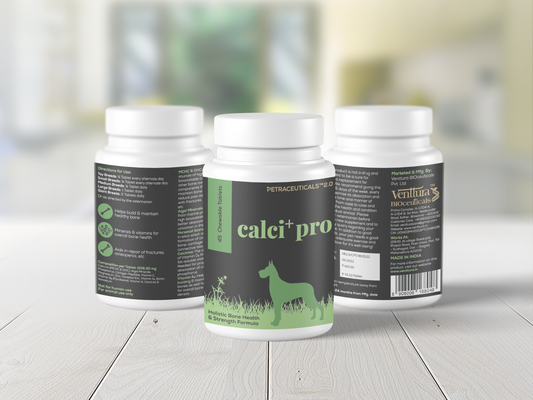1. Introduction
Equisetum arvense L. (horsetail) is a perennial plant that naturally grows in sandy, wet, or clay-rich soils and is distributed across North America, Europe, and Asia. It has an unusual growth pattern characterized by two distinct stages. In the first stage, a reddish-hued stem emerges from the fertile trunk, reaching a height of 10-18 cm, and bears a spore-producing spike at its tip. Once it completes its reproductive function, this stem withers and is replaced by a second type of stalk. The second stem, known as the sterile stem, is the part of the plant commonly used for medicinal purposes. This stage does not last long and eventually transitions into a green-colored stalk with spiral arrangements of small branches, growing to around 50 cm in height [1]. Horsetail is a bushy herb, with its name derived from its striking resemblance to a horse’s tail. The term "horsetail" is often applied to the entire genus. Its scientific name, Equisetum, originates from the Latin words equus (meaning "horse") and seta (meaning "bristle") [2]. This plant contains a diverse range of phytochemicals, including flavonoids, sterols, phenols, alkaloids, terpenoids, phytosterols, tannins, and saponins [3]. Additionally, it is a rich source of essential nutrients such as proteins, carbohydrates, amino acids, and several trace minerals, including silicon, sodium, potassium, iron, phosphorus, copper, strontium, calcium, magnesium, zinc, titanium,and manganese. It also provides vitamins B1, B2, B6, C, E, and K, highlighting its potential as a valuable dietary supplement [4] [5].The medicinal applications of E. arvense date back to ancient times due to its notable pharmacological properties. Extensive research has identified its wide array of phytochemicals as key contributors to its therapeutic effects [3].
Given its rich phytochemical profile and historical use in traditional medicine, horsetail extract has gained attention as a potential natural supplement for various health applications. While much of the existing research has focused on its benefits for human health, emerging studies suggest that its bioactive compounds may offer similar advantages for pets. This paper explores the potential role of Equisetum arvense in pet health, with a particular focus on its effects on bone strength, skin and coat health, urinary function, and overall well-being.
2. Horsetail Extract as a Natural Aid for Bone Health in Pets
2.1 Silica and Bone Health
Horsetail is abundant in phytochemicals that contribute to bone health and is recognized as a rich natural source of silica, a vital mineral for bone mineralization. While silica is primarily obtained through plant fibers and drinking water, horsetail is among the most concentrated plant-based sources. Bone composition includes both organic and inorganic elements, with type I collagen serving as a fundamental structural protein. Although calcium is crucial for bone health, it does not play a direct role in collagen synthesis or repair. Silica, however, is essential for the early stages of bone calcification and enhances the body’s ability to absorb and utilize calcium efficiently. Research has established a connection between silica intake and improved bone mineral density, while studies on silica-deficient rats and chicks have demonstrated skeletal abnormalities, further confirming its importance in bone formation [6]. Bone strength is determined by both its mineral content, which provides rigidity, and collagen, which ensures flexibility and shock absorption. Any alterations in collagen structure can compromise bone integrity and elevate the risk of fractures [7]. Silica is thought to support bone formation by stabilizing collagen, though its precise mechanism of action is not yet fully understood. Additionally, it plays a crucial role in the activity of prolyl hydroxylase, an enzyme necessary for collagen synthesis in bones, cartilage, and connective tissues [8]. Silica also promotes the function of chondroblasts, the specialized cells responsible for forming cartilage, by encouraging them to deposit structural proteins and other essential materials onto the extracellular matrix.
Bioactive Compounds in Horsetail and Their Effects on Bone Health
Due to its rich composition of bioactive compounds, including alkaloids, phytosterols, triterpenoids, tannins, and phenolic compounds, Equisetum arvense has been shown to help prevent bone loss associated with aging and estrogen deficiency [9]. Beyond its high silica content, this plant also contains secondary metabolites such as quercetin, kaempferol, luteolin, oleanolic acid, apigenin, betulinic acid, and ursolic acid, all of which play a role in promoting osteoblast activity and bone formation [6]. Research indicates that ursolic acid and oleanolic acid extracted from E. arvense may improve bone quality, regulate calcium balance, and influence vitamin D metabolism [10].One study investigated the effects of horsetail extract (Equisetum arvense) on bone health in rats by comparing different groups—one on a standard diet, another supplemented with calcium and vitamin D, and a third receiving horsetail extract. After 30 days, the rats given the highest dose of horsetail extract exhibited significantly stronger jawbones than those on a regular diet. While calcium and vitamin D supplementation led to increased vitamin D levels in the blood, horsetail extract demonstrated a direct impact on bone strength. These results suggest that horsetail extract may serve as a valuable natural supplement for enhancing bone health in pets [9].
Osteoporosis and the Role of Horsetail Extract
Osteoporosis is a skeletal disorder marked by bone loss and structural weakening, which increases bone fragility and the likelihood of fractures. This condition results from an imbalance between bone formation, driven by osteoblasts, and bone resorption, controlled by osteoclasts. Common contributing factors include aging, estrogen deficiency, and oxidative stress. Among the natural remedies explored for bone health, Equisetum arvense has gained attention for its beneficial properties. It is one of the richest plant sources of silica, a mineral crucial for calcium absorption, collagen synthesis, and maintaining bone strength. Due to its high silica concentration, E. arvense supports osteoporosis management by enhancing calcium utilization and promoting collagen formation, making it a viable natural treatment option [6].
3. Other benefits of Horsetail extract
3.1 Skin and joint health
Horsetail (Equisetum arvense) is a valuable natural supplement for promoting skin and coat health in dogs and cats. Rich in silica, a crucial mineral for collagen synthesis, horsetail helps maintain the strength and elasticity of the skin while also supporting the structure of joints. Since collagen is an essential component of both skin and connective tissues, the high silica content in horsetail contributes to improved skin hydration, resilience, and wound healing in pets. Research suggests that E. arvense possesses anti-inflammatory properties, making it a promising natural option for managing inflammatory skin conditions such as dermatitis [11]. Additionally, horsetail extract is widely recognized for its benefits in hair, skin, and nail care due to its ability to strengthen these tissues, further supporting healthy coats in pets [12]. By promoting collagen production and reducing inflammation, horsetail may aid in maintaining overall skin integrity and joint health in dogs and cats
3.2 Urinary Health and Diuretic Properties
Horsetail is widely utilized for managing urinary tract infections, primarily due to its diuretic properties, which are attributed to the presence of potassium salts and flavonoid glycosides, as well as the antimicrobial effects of its essential oil [1]. Several in vivo studies have evaluated its diuretic capabilities, revealing its ability to regulate and tone the genitourinary system. It has been shown to enhance urine production and aid in the treatment of mild lower urinary tract infections. In one study involving dogs, an E. arvense preparation exhibited a diuretic effect 15–20% greater than that of water. Additionally, research has highlighted horsetail’s antioxidant and astringent properties. The essential oil derived from E. arvense has demonstrated in vitro antimicrobial activity against several bacterial strains, further supporting its medicinal applications. Despite its antimicrobial potential and beyond its diuretic action, horsetail is known to strengthen kidney and bladder tissues, reducing inflammation associated with conditions such as kidney stones, bladder infections, kidney infections, urinary incontinence, and general kidney or bladder weakness. Traditionally, it has been employed in folk medicine to support urinary health by increasing urine output, facilitating the natural flushing of the urinary tract, and managing kidney stones [1]. The practice of irrigation therapy, which involves increased fluid intake to flush out the urinary system, has been recognized for its role in alleviating bacterial and inflammatory diseases of the lower urinary tract, including kidney stones [13]. A review further validated the diuretic capabilities of E. arvense, identifying luteolin as a primary compound responsible for promoting urine excretion [14]. Additionally, experimental studies in rats suggest that E. arvense extract may impact bladder function and influence hormone levels [15]. In pets, the diuretic effects of horsetail could be beneficial in managing conditions such as fluid retention and urinary tract issues. However, more research is required to establish its safety and efficacy specifically in dogs and cats.
3.3 Antioxidant and Anti-Inflammatory Properties of Horsetail Extract
Oxidative stress is a significant contributor to osteoporosis, as an increase in reactive oxygen species (ROS) can weaken osteoblastic activity and interfere with bone regeneration. Given the multifaceted causes of osteoporosis, plant-based compounds with antioxidant properties may serve as effective natural therapies [16]. Research has shown that flavonoids and triterpenoids may help counteract bone loss caused by aging and estrogen deficiency. Certain flavonoids, such as isoquercetin, kaempferol, luteolin, and apigenin, play a protective role in bone health, while triterpenoids like oleanolic acid, betulinic acid, and ursolic acid enhance bone formation by activating osteoblast cells [6].A recent study examined the bone-protective effects of a natural supplement containing horsetail extract (Equisetum arvense), lactoferrin, soy isoflavones, and vitamin D3 using both laboratory and animal models. In vitro findings revealed that the formula effectively decreased ROS levels and prostaglandin E2 (PGE2) production while suppressing the expression of inflammatory markers such as tumor necrosis factor-alpha (TNFα) and interleukin-6 (IL-6). Additionally, when the formula was administered to young and elderly female rats for 21 days, it significantly reduced inflammatory mediators, including PGE2 and nuclear factor-kappa B (NF-κB). These findings suggest that horsetail extract, particularly when combined with other bioactive ingredients, could be a valuable natural aid in preventing and managing osteoporosis-related bone loss in pets [16].Horsetail (Equisetum arvense) extract has been recognized for its anti-inflammatory properties in various studies. It has been shown to suppress the expression of pro-inflammatory cytokines in oral keratinocytes and in a rat model of periodontitis [17]. Additionally, research suggests that horsetail extract can help reduce inflammation in different tissues, providing potential benefits for overall health [18]. Animal studies on ear and paw edema further confirmed its potent anti-inflammatory effects. These properties are attributed to bioactive compounds such as camphor and methyl salicylate, which are known for their anti-inflammatory potential [20]. Horsetail’s mechanism of action likely involves modulating immune cell activity, leading to decreased inflammation [21].
3.4 Anticancer props
Research has highlighted the anticancer potential of horsetail, demonstrating its ability to inhibit the growth of various cancer cell types. Studies indicate that horsetail extracts effectively suppress pancreatic [22], ovarian, and melanoma cancer cells, with the n-hexane extract showing the highest efficacy [23]. These effects are largely attributed to its rich flavonoid profile, which includes genkwanin, myrcene, quercetin, apigenin-4′-glucoside, tricin, and sakuranetin. Additional research confirms its inhibitory effects on colon, breast, and liver cancer cells, exhibiting a dose-dependent response [24] [25] [26]. Moreover, a study on prostate cancer cells revealed significant cytotoxic activity, further reinforcing its potential as a natural anticancer agent [27]. While the precise mechanisms of action remain under investigation, these findings suggest that horsetail could play a role in future cancer therapies.
3.5 Antibacterial Potential and Infection Management
Studies indicate that horsetail extract effectively combats antibiotic-resistant bacteria, particularly by reducing Staphylococcus aureus biofilm formation. Additionally, it has demonstrated significant antibacterial activity against gram-positive bacteria, with S. aureus being especially susceptible [29] [30].The antibacterial properties of horsetail are believed to stem from its ability to disrupt bacterial cell walls, potentially offering a novel approach to addressing antibiotic resistance [31] [32]. Given that S. aureus and other bacteria are common culprits behind skin, ear, and wound infections in pets, horsetail extract may serve as a supportive natural remedy for promoting healing and infection management in dogs and cats. However, further studies are required to validate its safety and efficacy in veterinary applications.
3.6 Antidiabetic Activity
Research indicates that Equisetum arvense (horsetail) extract may offer antidiabetic benefits. In studies involving streptozotocin-induced diabetic rats, the extract was found to moderately lower blood glucose levels while significantly enhancing insulin sensitivity [33]. Additionally, experiments on diabetic mice demonstrated that horsetail extract helped safeguard testicular tissue from diabetes-related damage [34].Supporting its traditional use in managing diabetes, further research revealed that horsetail extract effectively inhibits β-glucosidase, an enzyme associated with type 2 diabetes, suggesting its potential role in blood sugar regulation.
3.7 Antihypertensive Activity
Horsetail (Equisetum arvense) extract may help in managing high blood pressure. A clinical trial found that it significantly lowered both systolic and diastolic blood pressure, showing effects comparable to a commonly used antihypertensive drug [36]. Researchers attribute these benefits to its rich content of terpenoids, which are known for their potential role in cardiovascular health [14].
3.8 Anti-Mutagenic Activity
Horsetail (Equisetum arvense) extract has shown anti-mutagenic properties by reducing DNA damage caused by harmful agents like cyclophosphamide [37]. Studies in mice found that the extract significantly lowered genetic damage, especially when given after exposure to mutagens. This protective effect is attributed to bioactive compounds such as phytol and oleic acid, which may work by blocking harmful substances from reaching cells, neutralizing toxic intermediates, and repairing DNA damage [37].In pets, horsetail’s antioxidant and DNA-protective properties may help reduce oxidative stress, which contributes to aging and disease progression. While more research is needed in dogs and cats, its bioactive compounds could support cellular health, particularly in aging or immunocompromised animals.
3.9 Cognitive and Nervous System Support
Equisetum arvense extract has exhibited anxiolytic properties that are more effective yet less sedative than diazepam [39]. Furthermore, its hydroalcoholic extract has been shown to enhance cognitive function and demonstrate anticonvulsant activity [41].
3.10 Reproductive Health
The antioxidative and hypoglycemic effects of Equisetum arvense have been linked to enhancements in sperm quality and fertilization rates. Research findings indicate that animals administered with horsetail extract demonstrated significantly higher fertilization success compared to untreated counterparts [34].
4. Conclusion
Horsetail (Equisetum arvense) extract offers significant health benefits for dogs and cats, primarily due to its rich silica content, which supports bone strength, joint health, and connective tissue integrity. Its potent antioxidant and anti-inflammatory properties contribute to overall wellness, while its natural diuretic effects aid in maintaining a healthy urinary system. Additionally, its antimicrobial compounds may support wound healing and skin health. Incorporating horsetail extract as a supplement can enhance the well-being of pets, making it a valuable addition to their nutritional regimen.
At Venttura, we offer two supplements—Calci+ Pro and Fur+—harnessing the power of horsetail extract, a rich source of silica known for its vital role in bone strength and coat health. Calci+ Pro is formulated to enhance skeletal integrity and mobility, while Fur+ promotes a lustrous coat and healthy skin, ensuring overall well-being for dogs.
References
1. Rocha, C. O. ., & Granato, A. C. (2021). Medicinal plants used in the phytotherapeutical treatment of urolithiasis in dogs – na integrative review. Research, Society and Development, 10(12), e501101220876. https://doi.org/10.33448/rsd-v10i12.20876
2. Asgarpanah J, Roohi E. Phytochemistry and pharmacological properties of Equisetum arvense L. J Medicinal Plants Res 2012; 6: 3689-93.
3. Luanda, Amos & Ripanda, Asha & Makangara, John. (2023). Therapeutic potential of Equisetum arvense L. for management of medical conditions. Phytomedicine Plus. 3. 100444. 10.1016/j.phyplu.2023.100444.
https://doi.org/10.1016/j.phyplu.2023.100444
4. Oniszczuk, A., Podg´ orski, R., Oniszczuk, T., Zukiewicz-Sobczak, W., Nowak, R., Waksmundzka-Hajnos, M., 2014. Extraction methods for the determination of phenolic compounds from Equisetum arvense L. herb. Ind. Crops Prod. 61, 377–381. https://doi.org/10.1016/j.indcrop.2014.07.036
5. Makia, R., Sammarrae, K.W.Al, Halbosiy, M.M.Al, Mashhadani, M.H.Al, 2022c. Pharmacology of the species Equisetum (Equisetum arvense). GSC Biol. Pharm. Sci. 18, 290–294. https://doi.org/10.30574/gscbps.2022.18.2.0060
6. Badole, Smita & Kotwal, Swati. (2014). Equisetum arvense: Ethanopharmacological and Phytochemical review with reference to osteoporosis. International Journal of Pharmaceutical Science and Health Care. 1. 131-141.
7. Viguet-Carrin, S., Garnero, P., & Delmas, P. D. (2006). The role of collagen in bone strength. Osteoporosis international : a journal established as result of cooperation between the European Foundation for Osteoporosis and the National Osteoporosis Foundation of the USA, 17(3), 319–336. https://doi.org/10.1007/s00198-005-2035-9
8. Jugdaohsingh R. (2007). Silicon and bone health. The journal of nutrition, health & aging, 11(2), 99–110. https://pubmed.ncbi.nlm.nih.gov/17435952/
9. Arbabzadegan, N., Moghadamnia, A. A., Kazemi, S., Nozari, F., Moudi, E., & Haghanifar, S. (2019). Effect of equisetum arvense extract on bone mineral density in Wistar rats via digital radiography. Caspian journal of internal medicine, 10(2), 176–182. https://doi.org/10.22088/cjim.10.2.176
10. Cao, S., Tian, X. L., Yu, W. X., Zhou, L. P., Dong, X. L., Favus, M. J., & Wong, M. S. (2018). Oleanolic Acid and Ursolic Acid Improve Bone Properties and Calcium Balance and Modulate Vitamin D Metabolism in Aged Female Rats. Frontiers in pharmacology, 9, 1435. https://doi.org/10.3389/fphar.2018.01435
11. Jeong, S. Y., Yu, H. S., Ra, M. J., Jung, S. M., Yu, J. N., Kim, J. C., & Kim, K. H. (2023). Phytochemical Investigation of Equisetum arvense and Evaluation of Their Anti-Inflammatory Potential in TNFα/INFγ-Stimulated Keratinocytes. Pharmaceuticals (Basel, Switzerland), 16(10), 1478. https://doi.org/10.3390/ph16101478
12. Baran, Ş., Allazawi, S., Semerci, A.B. (2024). The effects of Equisetum arvense L. extracts prepared using different solvents and extraction methods for antioxidant and antimicrobial activity. Food and Health, 10(1), 1-11. http://jfhs.scientificwebjournals.com/tr/download/article-file/3163124
13. Gunes, Yigit & Anlas, Ceren & Dokuzeylül, Banu. (2022). Pharmacological and clinical approach to plant based complementary health products in lower urinary system diseases in cats and dogs. Journal of Istanbul Veterinary Sciences. 6. 116-122.
http://dx.doi.org/10.30704/http-www-jivs-net.1150072
14. Boeing, T., Tafarelo Moreno, K.G., Gasparotto Junior, A., Mota Da Silva, L., De Souza, P., 2021. Phytochemistry and pharmacology of the genus Equisetum (Equisetaceae): a narrative review of the species with therapeutic potential for kidney diseases. Evidence-based Complement. Altern. Med. https://doi.org/10.1155/2021/6658434
15. Zhang, H., Li, N., Li, K., Li, P., 2015. Effect of ethanol root extract of equisetum arvense (L) on urinary bladder activity in rats and analysis of principal plant constituents. Trop. J. Pharm. Res. 14, 1451–1458. https://doi.org/10.4314/tjpr.v14i8.18
16. Menghini, L., Ferrante, C., Leporini, L., Recinella, L., Chiavaroli, A., Leone, S., Pintore, G., Vacca, M., Orlando, G., & Brunetti, L. (2016). A natural formula containing lactoferrin, Equisetum arvensis, soy isoflavones and vitamin D3 modulates bone remodeling and inflammatory markers in young and aged rats. Journal of biological regulators and homeostatic agents, 30(4), 985–996.
https://pubmed.ncbi.nlm.nih.gov/28078844/
17.Shiba, F., Furusho, H., Takata, T., Shimizu, R., Miyauchi, M., 2022. Equisetum arvense inhibits alveolar bone destruction in a rat model with lipopolysaccharide (LPS)- induced periodontitis. Int. J. Dent. 2022, 1–15. https://doi.org/10.1155/2022/ 7398924
18 Alahmadi, A.A., Abduljawad, E.A., 2021. Equisetum arvense L. extract ameliorates oxidative stress, inflammation and testicular injury induced by methotrexate in male rats. J. Pharm. Res. Int. 33, 101–114. https://doi.org/10.9734/jpri/2021/ v33i34a31829
19 Roumil, I., Cheniti, W., Baghiani, A., Charef, N., Arrar, L., 2022. HPLC analysis, acute toxicity and assessment of antioxidant and anti-inflammatory capacity of different extracts of Equisetum arvense. South Asian J. Exp. Biol. 12, 318–326. https://doi. org/10.38150/sajeb.12(3).p318-326
20 Adhikari, A., Bhandari, S., Pandey, D.P., 2019. Anti-inflammatory compounds camphor and methylsalicylate from traditionally used pain curing plant Equisetum arvense L. J. Nepal Chem. Soc. 40, 1–4. https://doi.org/10.3126/jncs.v40i0.27270
21. Gründemann, C., Lengen, K., Sauer, B., Garcia-K¨aufer, M., Zehl, M., Huber, R., 2014. Equisetum arvense (common horsetail) modulates the function of inflammatory immunocompetent cells. BMC Complement. Altern. Med. 14, 1–10. https://doi.org/ 10.1186/1472-6882-14-283
22 Bhat, A.A., Ahamad, B., Rehman, M.U., Ahmad, P., 2020. Impact of ethanolic extract of Equisetum arvense (EA1) on pancreatic carcinoma AsPC-1 cells. Saudi J. Biol. Sci. 27, 1260–1264. https://doi.org/10.1016/j.sjbs.2020.01.029
23 Zia-ur-Rehman, Gurgul, A., Youn, I., Maldonado, A., Wahid, F., Che, C.T., Khan, T., 2022. UHPLC-MS/MS-GNPS based phytochemical investigation of Equisetum arvense L. And evaluation of cytotoxicity against human melanoma and ovarian cancer cells. Saudi J. Biol. Sci. 29, 103271 https://doi.org/10.1016/j.sjbs.2022.03.021
24. Wang, L., Zhang, L., Zheng, G., Luo, H., El-kott, A.F., El-kenawy, A.E., 2021. Equisetum arvense L aqueous extract: a novel chemotherapeutic supplement for treatment of human colon carcinoma. Arch. Med. Sci. https://doi.org/10.5114/aoms/138146
25. Habeb, A., Hade, I., Talib, A., 2019. Cytotoxic effect of alkaloid extract of Equisetum arvense plant on human lymphocytes and MCF7 cancer cell line. Diyala J. Pure Sci. 15, 38–52. https://doi.org/10.24237/djps.15.02.479c
26. Almasoud, H.A., Ali, D., Yaseen, K.N., Almukhlafi, H., Alothman, N.S., Almutairi, B., Almeer, R., Alyami, N., Alkahtani, S., Alarifi, S., 2022. Dose-dependent variation in anticancer activity of hexane and chloroform extracts of field horsetail plant on human hepatocarcinoma cells. Biomed Res. Int. 2022. https://doi.org/10.1155/ 2022/5778411
27. Gu, H., Yi, T., Lin, P., Hu, J., 2022. Study on essential oil, antioxidant activity, anti- human prostate cancer effects, and induction of apoptosis by Equisetum arvense. Open Chem 20, 1187–1195. https://doi.org/10.1515/chem-2022-0203
28. Kryvtsova, A.P.M., 2021. Antimicrobial, antibiofilm-forming properties of Equisetum arvense L. shoot extracts. Curr. Perspect. Med. Aromat. Plants 4, 50–57. https://doi. org/10.38093/cupmap.953083
29. Pallag, A., Filip, G.A., Olteanu, D., Clichici, S., Baldea, I., Jurca, T., Micle, O., Vicas, L., Marian, E., Sorit ¸˘au, O., Cenariu, M., Mures ¸an, M., 2018. Equisetum arvense L. extract induces antibacterial activity and modulates oxidative stress, inflammation, and apoptosis in endothelial vascular cells exposed to hyperosmotic stress. Oxid. Med. Cell. Longev. 2018. https://doi.org/10.1155/2018/3060525
30. Canadanovi´ c-Brunet, J.M., ´ Cetkovi´ c, G.S., Djilas, S.M., Tumbas, V.T., Savatovi´ c, S.S., Mandi´ c, A.I., Markov, S.L., Cvetkovi´ c, D.D., 2009. Radical scavenging and antimicrobial activity of horsetail (Equisetum arvense L.) extracts. Int. J. Food Sci. Technol. 44, 269–278. https://doi.org/10.1111/j.1365-2621.2007.01680.x
31. Aabed, K., Mohammed, A.E., Benabdelkamel, H., Masood, A., Alfadda, A.A., Alanazi, I. O., Alnehmi, E.A., 2020. Antimicrobial mechanism and identification of the proteins mediated by extracts from asphaltum punjabianum and myrtus communis. ACS Omega 5, 31019–31035. https://doi.org/10.1021/acsomega.0c04047
32. Vaou, N., Stavropoulou, E., Voidarou, C., Tsigalou, C., Bezirtzoglou, E., 2021. Towards advances in medicinal plant antimicrobial activity: a review study on challenges and future perspectives. Microorganisms. https://doi.org/10.3390/ microorganisms9102041
33. Hegedus, C., Muresan, M., Badale, A., Bombicz, M., Varga, B., Szil´ agyi, A., Sinka, D., B´ acskay, I., Popoviciu, M., Magyar, I., Szarvas, M.M., Szollosi, E., N´ emeth, J., Szilv´assy, Z., Pallag, A., Kiss, R., 2020. SIRT1 activation by Equisetum arvense L. (Horsetail) modulates insulin sensitivity in streptozotocin induced diabetic rats. Molecules 25, 1–19. https://doi.org/10.3390/molecules25112541
34. Fajri, M., Ahmadi, A., Sadrkhanlou, R., 2021. Protective effects of Equisetum arvense methanolic extract on testicular tissue disorders in streptozotocin-induced diabetic murine model. Vet. Res. Forum 12, 497–503. https://doi.org/10.30466/ vrf.2020.108502.2576
35. Svogie, A., Mothibe, M., Bassey, K., 2022. Evaluation of South African Equisetum arvense as an antidiabetic, antioxidant and immune booster using economical thin layer chromatography bio-autography. J. Biomed. Res. Environ. Sci. 3, 181–188. https:// doi.org/10.37871/jbres1419
36. Carneiro, D.M., Jardim, T.V., Araújo, Y.C.L., Arantes, A.C., de Sousa, A.C., Barroso, W.K. S., Sousa, A.L.L., Cruz, A.de C., da Cunha, .L..C.., Jardim, P.C.B.V., 2022. Antihypertensive effect of Equisetum arvense L.: a double-blind, randomized efficacy and safety clinical trial. Phytomedicine 99, 153955. https://doi.org/10.1016/j. phymed.2022.153955
37. Kour, J., Al, M.N., Shaha, N.U.D., Tabassum, N., 2017. Ameliorating potential of Equisetum arvense against the Cyclophosphamide induced genotoxic damage in mice. Can. J. Biotechnol. 1 https://doi.org/10.24870/cjb.2017-a92, 106–106
38. Akram, M., Riaz, M., Wadood, A.W.C., Hazrat, A., Mukhtiar, M., Ahmad Zakki, S., Daniyal, M., Shariati, M.A., Said Khan, F., Zainab, R., 2020. Medicinal plants with anti-mutagenic potential. Biotechnol. Biotechnol. Equip. 34, 309–318. https://doi. org/10.1080/13102818.2020.1749527
39. Singh, N., Kaur, S., Bedi, P. M., & Kaur, D. (2011). Anxiolytic effects of Equisetum arvense Linn. extracts in mice. Indian journal of experimental biology, 49(5), 352–356. https://pubmed.ncbi.nlm.nih.gov/21615059/
40. Dos Santos Junior, J.G., Do Monte, F.H.M., Blanco, M.M., Do Nascimento Bispo Lanziotti, V.M., Maia, F.D., De Almeida Leal, L.K., 2005. Cognitive enhancement in aged rats after chronic administration of Equisetum arvense L. with demonstrated antioxidant properties in vitro. Pharmacol. Biochem. Behav. 81, 593–600. https:// doi.org/10.1016/j.pbb.2005.04.012
41. Dos Santos, J.G., Blanco, M.M., Do Monte, F.H.M., Russi, M., Lanziotti, V.M.N.B., Leal, L. K.A.M., Cunha, G.M., 2005. Sedative and anticonvulsant effects of hydroalcoholic extract of Equisetum arvense. Fitoterapia 76, 508–513. https://doi.org/10.1016/j. f itote.2005.04.017

 Proud to have impacted over 1 Million Happy Pet Parents since 2013.
Proud to have impacted over 1 Million Happy Pet Parents since 2013. 











